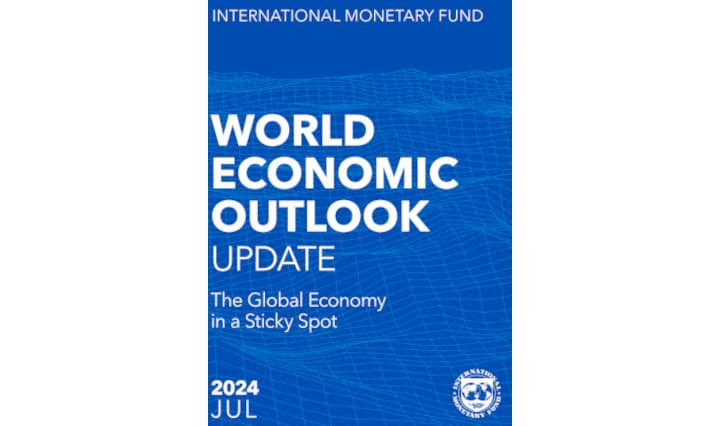NY Fed reports US borrowing issues are rising: Rejection rate for credit applications is at 21.8%, highest since June 2018. Probability of loan application rejection has significantly increased across all loan types, reaching new highs.


Wut mean?
Credit application rates in the past year have dropped to 40.3%, the lowest since October 2020, with declines in auto loans and credit card limit requests.
- However, there was an increase in applications for credit cards, mortgages, and mortgage refinances.
The overall rejection rate for credit applications has risen to 21.8%, the highest since June 2018, with the most rejections among those with credit scores below 680.
- The rejection rate for auto loans hit a new high at 14.2%, up from 9.1% in February.
- Despite these trends, the proportion of respondents planning to apply for credit in the next year slightly increased to 26.4%.
- However, the average reported probability of loan application rejection increased sharply across all loan types, hitting new series highs for auto loans, mortgages, and credit card limit increase requests.
Reminder, In May, Revolving credit (credit cards) increased at an annual rate of 8.2%:



- Total consumer credit increased at an annual rate of 1.8% in May 2023.
- Revolving credit (which includes credit cards) grew at an annual rate of 8.2% in May 2023.
- Nonrevolving credit (which includes loans for things like cars and education) decreased at an annual rate of 0.4% in May 2023.
Regarding the total outstanding consumer credit as of May 2023:
- The total outstanding consumer credit was $4,864.9 billion.
- Revolving credit accounted for $1,253.5 billion of the total outstanding consumer credit.
- Nonrevolving credit constituted $3,611.4 billion of the total outstanding consumer credit.


- Total household debt has risen by $148 billion, or 0.9 percent, to $17.05 trillion in the first quarter of 2023.
- Mortgage balances climbed by $121 billion and stood at $12.04 trillion at the end of March.
- Auto loans to $1.56 trillion.
- Student loans to $1.60 trillion.
- Credit Card debt $986 billion.
However, unlike the banks, there are no fancy programs designed to keep households afloat in this inflating economy--and boy are households starting to feel it, especially in the areas like services and housing (that are BIG components of CPI--and way more 'sticky' than goods).
To try and further drive home the shaky ground households are on, let's revisit the Fed's Economic Well-being US Household 2022.
- "fewer adults reported having money left over after paying their expenses. 54% of adults said that their budgets had been affected "a lot" by price increases."
- "51% of adults reported that they reduced their savings in response to higher prices."
- The share of adults who reported that they would cover a $400 emergency expense using cash or its equivalent was 63 percent.
It is the younger generations starting to see itself break into delinquency now:


Student Loan repayments restarting in October WILL lead to more defaults:

The Debt Time Bomb is Ticking!:

- Commercial Chapter 11 Bankruptcies: There were 2,973 filings in the first half of 2023, a 68% increase from the 1,766 filed in the same period in 2022.
- Individual Chapter 13 Filings: These increased by 23% during the same period.
- Overall Commercial Filings: There were 12,107 filings in the first half of 2023, an 18% increase from the 10,258 in the first half of 2022.
- Small Business Filings (Subchapter V): There were 814 filings in the first half of 2023, a 55% increase from the 525 in the same period in 2022.
- June 2023 Filings: Commercial filings increased 12% to 2,123, and commercial Chapter 11 filings increased 9% to 404. Subchapter V elections increased 111% to 198.
- Total Bankruptcy Filings: There were 217,420 filings in the first half of 2023, a 17% increase from the 185,352 in the same period in 2022.
- Total Individual Filings: These increased 17% to 205,313 in the first half of 2023, from 175,094 in the first half of 2022.
- Individual Chapter 13 Filings: There were 85,390 filings in the first half of 2023, a 23% increase from the 69,367 in the same period in 2022.
- June 2023 vs June 2022: Total bankruptcy filings increased 17% to 37,700. Commercial filings were up 12% from 1,891, and total individual filings were up 18% from 30,307.
These statistics show a significant increase in bankruptcy filings, both for businesses and individuals.
People are going to die because of this


To meet the rising need for food and nutrition assistance during the pandemic in the United States, all states were approved to provide Emergency Allotments (EA) to households enrolled in the Supplemental Nutrition Assistance Program (SNAP). In this analysis, we use the Census Bureau’s Household Pulse Surveys and exploit staggered state-level variation in dissolution of the SNAP EA payments to study whether the end of EA is associated with food-related challenges and economic hardships. Our findings indicate that EA termination is followed by a decrease in the likelihood that adult survey respondents had sufficient food for consumption and an increase in the probability of experiencing difficulty in paying meeting with usual household expenses. These findings provide policy-relevant insights into the potential impact of the nationwide termination of the EA payments that came into effect in early 2023.

- Auto loans are above 3% delinquency for (30-39) and approaching 5% for (18-29)
- Credit Cards are above 6% delinquency for (30-39) and approaching 9% for (18-29)
- Student Loan delinquency is being artificially suppressed currently.
- When folks (18-29) and (30-39) have to pay Auto loans, Credit Card debt, and Student loans all at the same time, delinquencies across all 3 will jump bigly.
- People will DIE being priced out of their lives in favor of raising interest rates to fight inflation for a problem the Fed created to begin with.
TLDRS:
Credit application rates in the past year have dropped to 40.3%, the lowest since October 2020, with declines in auto loans and credit card limit requests.
- However, there was an increase in applications for credit cards, mortgages, and mortgage refinances.
The overall rejection rate for credit applications has risen to 21.8%, the highest since June 2018, with the most rejections among those with credit scores below 680.
- The rejection rate for auto loans hit a new high at 14.2%, up from 9.1% in February.
- Despite these trends, the proportion of respondents planning to apply for credit in the next year slightly increased to 26.4%.
- However, the average reported probability of loan application rejection increased sharply across all loan types, hitting new series highs for auto loans, mortgages, and credit card limit increase requests.
Regarding the total outstanding consumer credit as of May 2023:
- The total outstanding consumer credit was $4,864.9 billion (NEW ALL TIME HIGH)
- Revolving credit accounted for $1,253.5 billion of the total outstanding consumer credit. (NEW ALL TIME HIGH)
- Nonrevolving credit constituted $3,611.4 billion of the total outstanding consumer credit. (JUST OFF ALL TIME HIGH)
- I try and show it is setup to start getting worse come October.
- Reminder, while banks have the liquidity fairy, 'we' get the promise of 2 more rate hikes this year, Atlanta Fed President Raphael Bostic yet again enrichens himself inappropriately from his position.
- To fix one end of their mandate (price stability) from the inflation problem they created, the Fed will continue sacrificing employment (the other end of their mandate) to bolster price stability by continuing to raise interest rates--causing further stress for the households identified above.
- I believe inflation is the match that has been lit that will light the fuse of our rocket.



